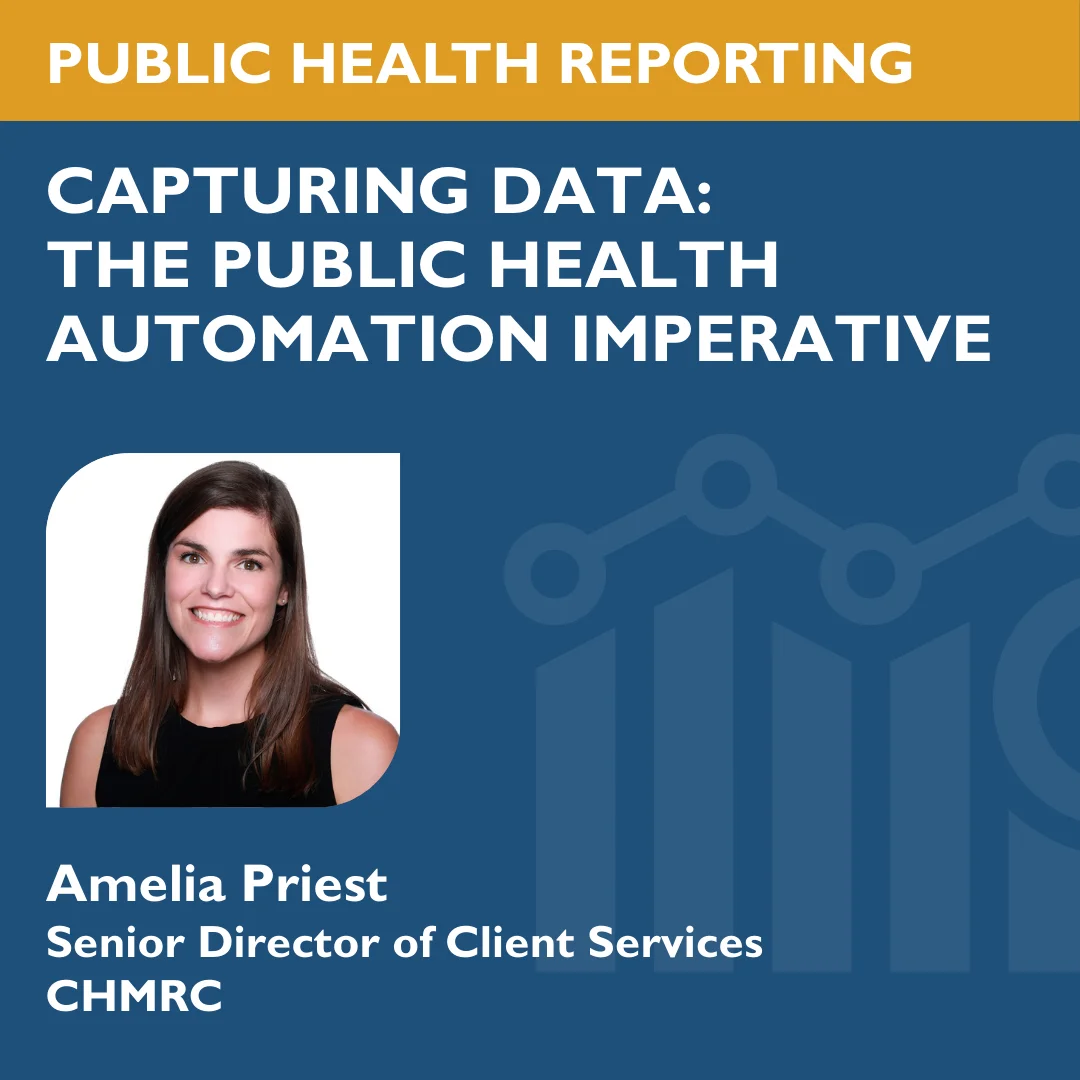
By Amelia Priest | Senior Director of Client Services
When it comes to infectious and communicable disease response, timing matters. That’s why automating data feeds from providers to public health is such a critical initiative. But executing on this imperative is not as easy as it seems.
To encourage interoperability, CMS incentivizes hospital inpatient facilities to provide data to public health through electronic health systems to help monitor community health and manage interventions (ex. Electronic Case Reporting “eCR”, Immunization Records, Syndromic Surveillance, and Laboratory Results). While progress has been made, scaling this work is a complicated process. There’s still work to do, but ultimately automation means less paperwork for providers, faster alerts, and better coordination when every hour counts.

Inpatient Data Tells Only Part of the Story
Incentivizing inpatient facilities to automate reporting is a step in the right direction for promoting interoperability and getting information into public health hands quicker. But we’re missing some critical data that can help provide a more comprehensive picture – data from outpatient settings like primary care offices and urgent care centers. These settings capture communicable disease data that is critical for public health surveillance. Focusing communicable disease only on inpatient settings has limitations, and can lead to missed opportunities for early intervention, delayed response from public health, underestimating disease prevalence, and can create challenges in resource allocation at the local level.
Some states, like California, require the submission of outpatient data to local public health, but this process can be cumbersome and administratively complex. CHMRC is helping health systems automate state and local communicable disease reporting to alleviate the burden from providers while ensuring that valuable outpatient data is being accurately and timely reported to public health.
Data Only Matters If We Can Use It
Many local and rural health departments face significant challenges in putting this data to work. It’s not just about systems – it’s about people. Public health agencies need trained staff, interoperable infrastructure, and sustainable funding to receive, process, and act on these insights. That’s especially tough as many local departments face shrinking budgets and increased responsibility.
The Missing Link: Community Insight
There’s also a layer of context that no automated system can capture alone. That’s where community organizations come in. They’re often the first to hear what’s happening on the ground, insight that goes beyond self-reported data. They help fill gaps around health-related social needs, cultural dynamics, and those who may or may not be accessing care at all.
Bringing community partners into the loop strengthens everything:
- Clearer data: grounded in lived experience
- More equitable interventions: tailored to local context
- Stronger response: when public health and community act on the same signals
Moving Forward, Together
Public health reporting is evolving fast-and that’s a good thing. But we need to make sure that evolution includes everyone: local health departments, community organizations, and frontline providers.
Because smart data is only powerful when people on the ground can use it.
And stronger systems only work when they reflect the realities of the communities they serve.
CHMRC is committed to helping health systems ensure that their data is being received quickly and accurately by public health, to help providers focus on patient care. We’re also working with community organizations to advance their ability to collect, share and report on social needs. Together, we believe this dual approach of linking clinical data with real-world community insight, is essential to improving health outcomes and building a more responsive, equitable public health system.
Looking to simplify your reporting and strengthen your impact? Let’s talk.
Connect with us and sign up for our newsletter.

 CHMRC Community Network
CHMRC Community Network